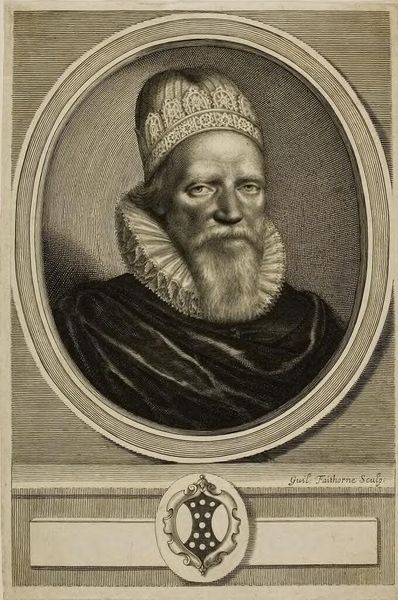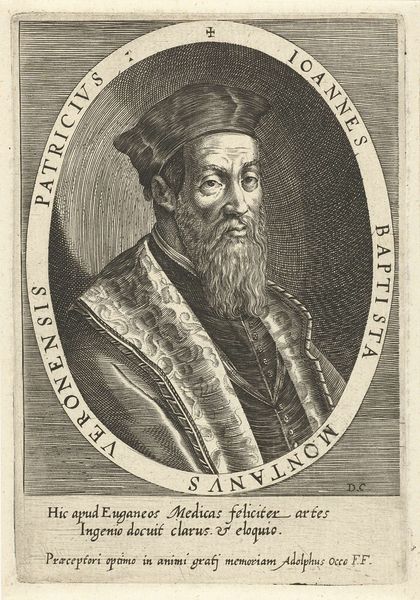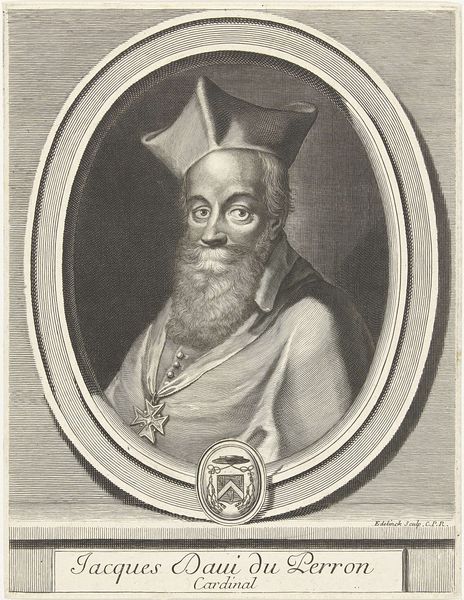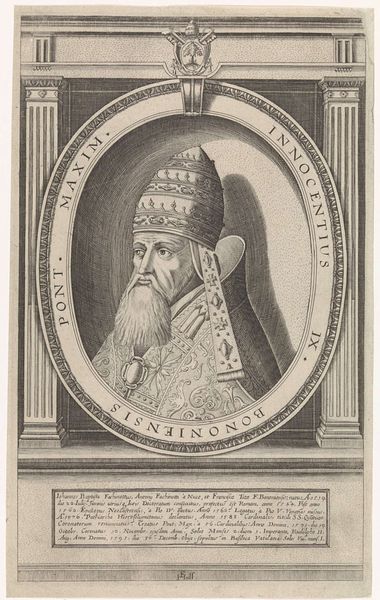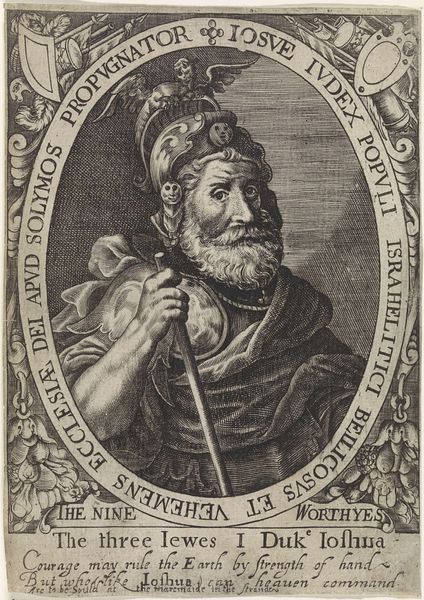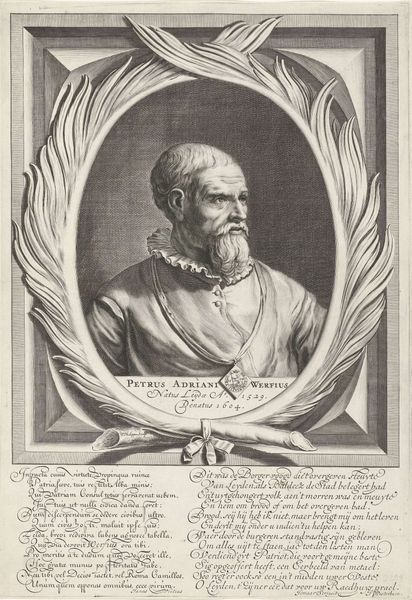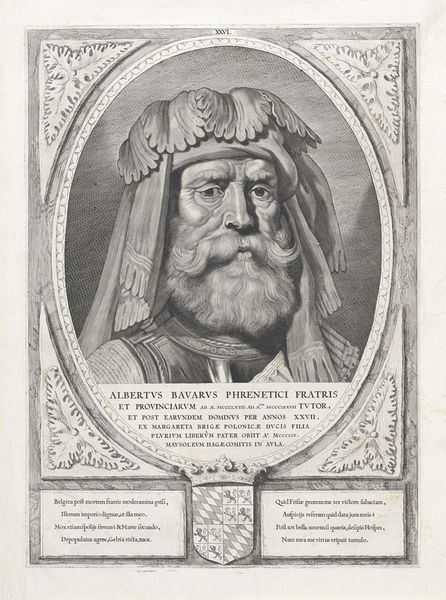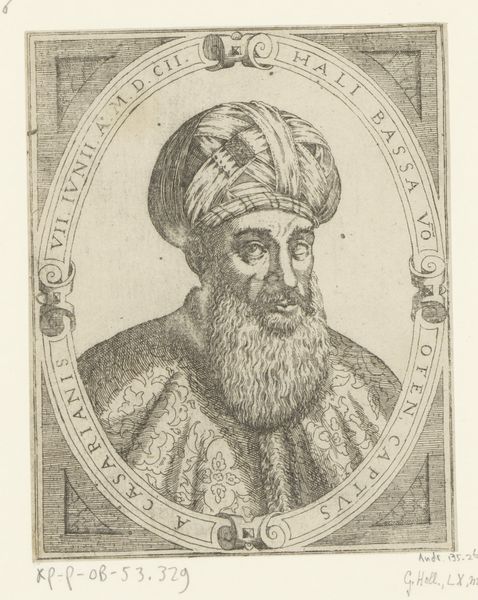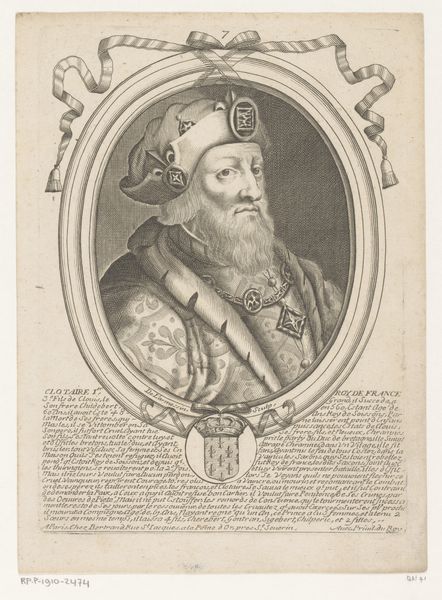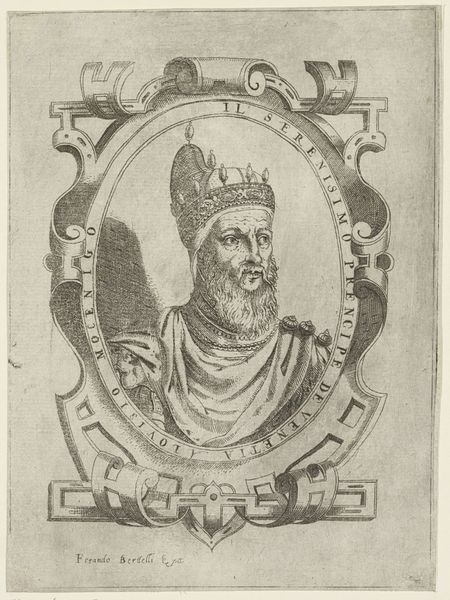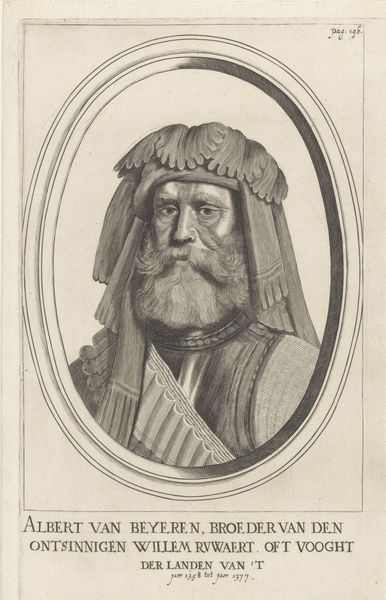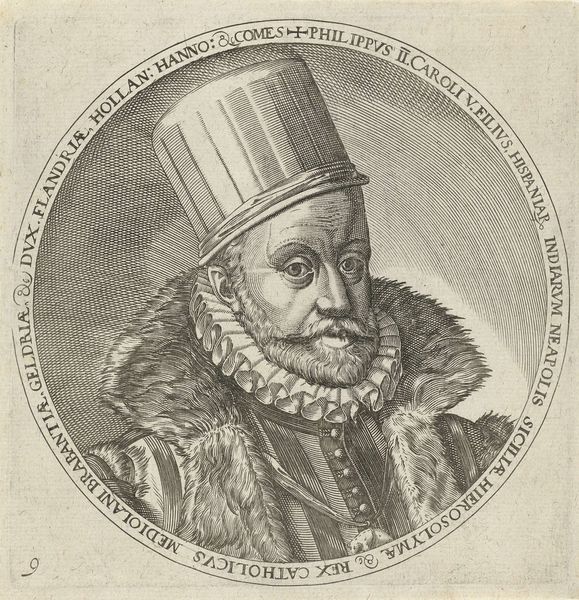
Sir Henry Spelman (Henricus Spelmannus Eques Auratus) 1664
0:00
0:00
drawing, print, engraving
#
portrait
#
drawing
#
baroque
# print
#
sculpture
#
engraving
Dimensions: Sheet: 8 9/16 × 5 11/16 in. (21.8 × 14.5 cm)
Copyright: Public Domain
Editor: This is "Sir Henry Spelman" by William Faithorne the Elder, made in 1664. It's an engraving, so it’s primarily about line, but I’m really struck by how the artist uses just that line to create such strong contrasts. What jumps out at you about this print? Curator: The most striking aspect to me is how Faithorne constructs the visual space using the interplay of linear hatching and cross-hatching to create tonal gradations, particularly in the depiction of Sir Henry's face and the drapery. The oval frame is a fascinating inclusion, because its curved lines counterpoint the rigidity of the grid beneath. Notice how the textures in the hat contrast with the flat ground behind him; it provides him an immediate sense of dynamism within an otherwise constrained frame. Does that read to you? Editor: I see it. It's like he is contained, but trying to push outward at the same time! The symmetry of the figure also suggests a restrained composure and dignity. What does the Latin inscription below the oval symbol add? Curator: Exactly. Note that Latin was used in portraiture in learned circles to lend a subject added status through historical weight and association. This functions here through linguistic codes – and the same goes for his robes and decorative cap. Editor: So every detail, from the lines to the inscription, really constructs a sense of importance. It’s all building layers. Curator: Precisely! Line, composition, framing - all coalesce into meaning. Through his conscious management of these, Faithorne does more than represent his subject, but also a visual embodiment of Baroque ideals regarding structure and order. Editor: Thanks, it makes me appreciate how complex even the simplest seeming works are. Curator: My pleasure, seeing comes before knowing, but by interrogating an artwork on a fundamental basis – the way that the artist used its constituent materials to make their statement – we move one step closer to decoding meaning, wouldn’t you agree?
Comments
No comments
Be the first to comment and join the conversation on the ultimate creative platform.
